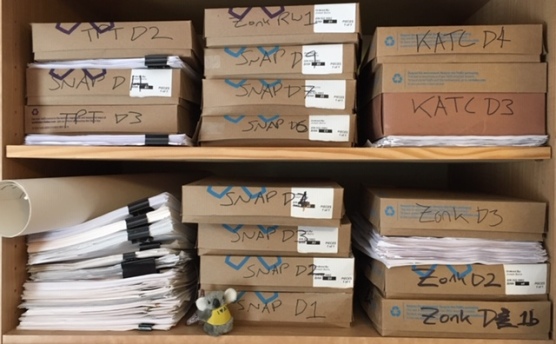
Some of my many, many edits
All last month and into this one, I’ve been editing like mad. Eraserhead Press (the largest bizarro publisher out there) is starting one of their yearly open submissions, putting the pinch on what is otherwise a leisurely task. Meanwhile, I’m struggling to rewrite a novel I wrote years ago that just won’t cooperate.
This week will be a departure from my usual content. My friend, author Charles Muir, suggested I write about my editing/revising process, and since it’s the only thing on my mind these days, I thought it fitting.
Despite being labeled “guide,” I wouldn’t necessarily follow my example. I’m a completely self-taught editor and more than that, I have a very peculiar way of doing things. Those who know me know that everything I do is precise, that I am obsessed with routine. This is no different in my editing.
Here is my method:
1. As you’ll hear many people recommend, I wait a month after finishing the rough draft before I start editing. In the meantime, I plot my next work and write shorter fiction.
2. During this month, I also scribble down notes about things I want to change. I’ll usually end up with 6 to 10 pages of notes, which I then organize into these categories:
- Theme/style changes
- Single edits
- Overall edits
- Character changes
- Prose changes
3. I then further organize them chronologically and format them into an “Edit Key” for reference.
4. I print out the manuscript and use a red pen for short corrections and a blue pen to number large edits, which I then type out in another document to later paste in.

5. Rather than attack it all at once, I focus on one category of edits at a time. For example: one draft focuses solely on the characters, another on the plot, etc. It’s tedious and it takes longer, but it ensures I don’t miss a thing.
6. All through this process, more ideas come to me, adding a few more drafts.
7. By the fifth or sixth draft, I’m usually content with the structure of the novel and start my polishing. I read aloud, listening mostly to rhythms. Anything clunky or awkward is expunged. I also apply the best writing advice I’ve ever received: Omit unnecessary words.
8. Polishing takes a few more drafts (I’m usually around draft 8 or 9 by then) and then I let my mother read over it. She is always my first reader.
9. Once I’ve made her changes, I polish it up a little more and send it off to my editor Jim Thomsen who sends me his corrections.
10. I make the appropriate edits and then read over the whole thing in a loud voice before sending it off to the publisher.
You can see the impracticality in my process. I usually end up with ten to fifteen drafts in the end—sometimes as many as twenty. That takes a lot of time and a lot of paper. But I wouldn’t change my method for the world. With everything precisely laid out, my brain can compartmentalize and focus on one thing at a time.
Who knows? You might take something valuable out of this. If you are a writer, I would love to hear your method in the comments below.
Tchau,
Zé
I really love hearing your editing process Ze – I am not a serious writer, but I do self publish fluff genre fiction on amazon – and I must admit I’m a write-it-and-done sort of writer – I do a spell check and that’s it.. If I ever attempt something I want to be proud of 🙂 I will take a leaf out of your book. One thing I have in common with your process – I read what I write out loud to listen to the words, and to make sure the dialogue sounds like something that would actually be said. Nice post – thanks!
LikeLiked by 1 person
I hope it helps. Thanks!
LikeLike
Pingback: Fast Five interview: Zé Burns – S.T. CARTLEDGE
Pingback: Writing Update – June 2021 | Zé Burns | Blog
Pingback: How I Write a Novel | Zé Burns | Blog